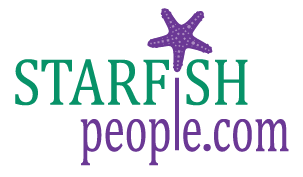NOTE: This guide is based on government guidance published on 26 March 2020. Details of the Coronavirus Job Retention Scheme may change as we approach the expected formal launch in late April.
Summary
Understand how the Coronavirus Job Retention Scheme will operate and what wage costs can be reimbursed to employers.
Be aware that furloughed employees must not undertake any work for you other than training.
Check that any employee you propose to place on furlough was on your PAYE system on 28 February 2020.
Consider if it is necessary to furlough all employees at the same time.
If you are not able to top up the employee’s pay, check if the contract allows the employee to be laid off without pay.
If necessary, seek a variation in the contract to allow the employee to be paid at a reduced rate.
If the employee agrees to the variation, or if no variation is needed, write to them to confirm that they are being furloughed from a specified date for a minimum of three weeks.
Work out the correct sum to be claimed in respect of each employee.
When employees have been furloughed for three weeks, make a claim for a government grant through the online portal for the scheme (not yet available).
Pay employees in full for any period of annual leave they take while furloughed.
Be aware that employees who are most at risk from coronavirus are entitled to be furloughed while they are “shielding”.
Consider how to deal with employees on maternity leave and other types of family-related leave.
The Coronavirus Job Retention Scheme
The Coronavirus Job Retention Scheme is an unprecedented scheme under which the Government will award grants to employers, covering a significant proportion of the wage costs of those employees who are not working as a result of the coronavirus outbreak.
All employers in the private, public and not-for-profit sectors are eligible to claim under the scheme, provided that they were operating a PAYE system on 28 February 2020.
An employer can designate an employee as “furloughed” and the Government will pay the employer up to 80% of that employee’s wage costs, to a maximum of £2,500 per month. In addition, the employer can claim the associated employer national insurance contributions and minimum automatic enrolment employer pension contributions on that subsidised wage.
The employer pays the furloughed employee through its PAYE system, with any payment continuing to be taxed as normal, then makes a claim to HMRC for reimbursement. The employer must pay the employee on their normal contractual pay dates, unless it obtains their agreement to vary the contract. Any period of furlough must last for at least three weeks in order to qualify under the scheme.
The amount the employer can claim from HMRC will be based on the employee’s normal salary. Where the pay is variable, the employer can claim for the higher of either the same month’s earnings from the previous year or the average monthly earnings from the 2019/2020 tax year. Where the employee has been employed for less than a year, the employer should take an average of their earnings since they started work.
The government guidance says that employers can choose to top up the amount they can claim from HMRC and pay the employee more than 80% of their earnings. This is potentially misleading, as the scheme does not purport to change the employer’s contractual obligations towards its employees. What the employer is obliged to pay employees if it sends them home without work is a matter for the contract of employment and is not affected by the scheme. In many cases, an employer will be obliged to continue paying an employee in full, unless the employee agrees to accept a temporary variation in the contract (see What agreement or consultation is necessary?).
If you’re looking for advice on this subject and want to know how the changes will impact your business.
Contact us by completing our secure contact form

Alternatively call us direct on 01243-607357, or email [email protected]


